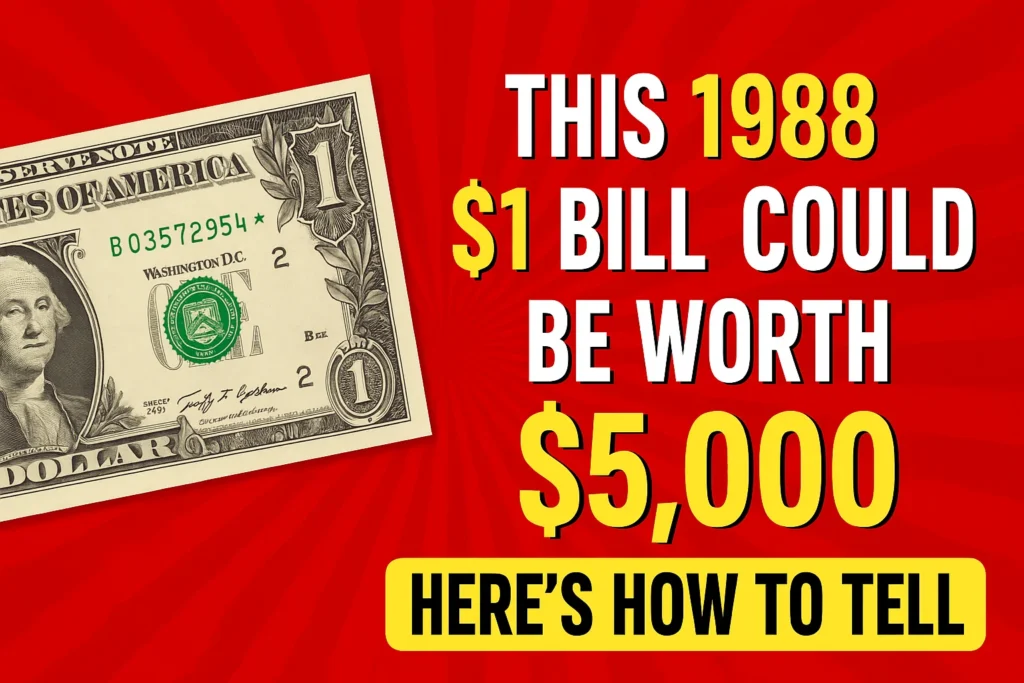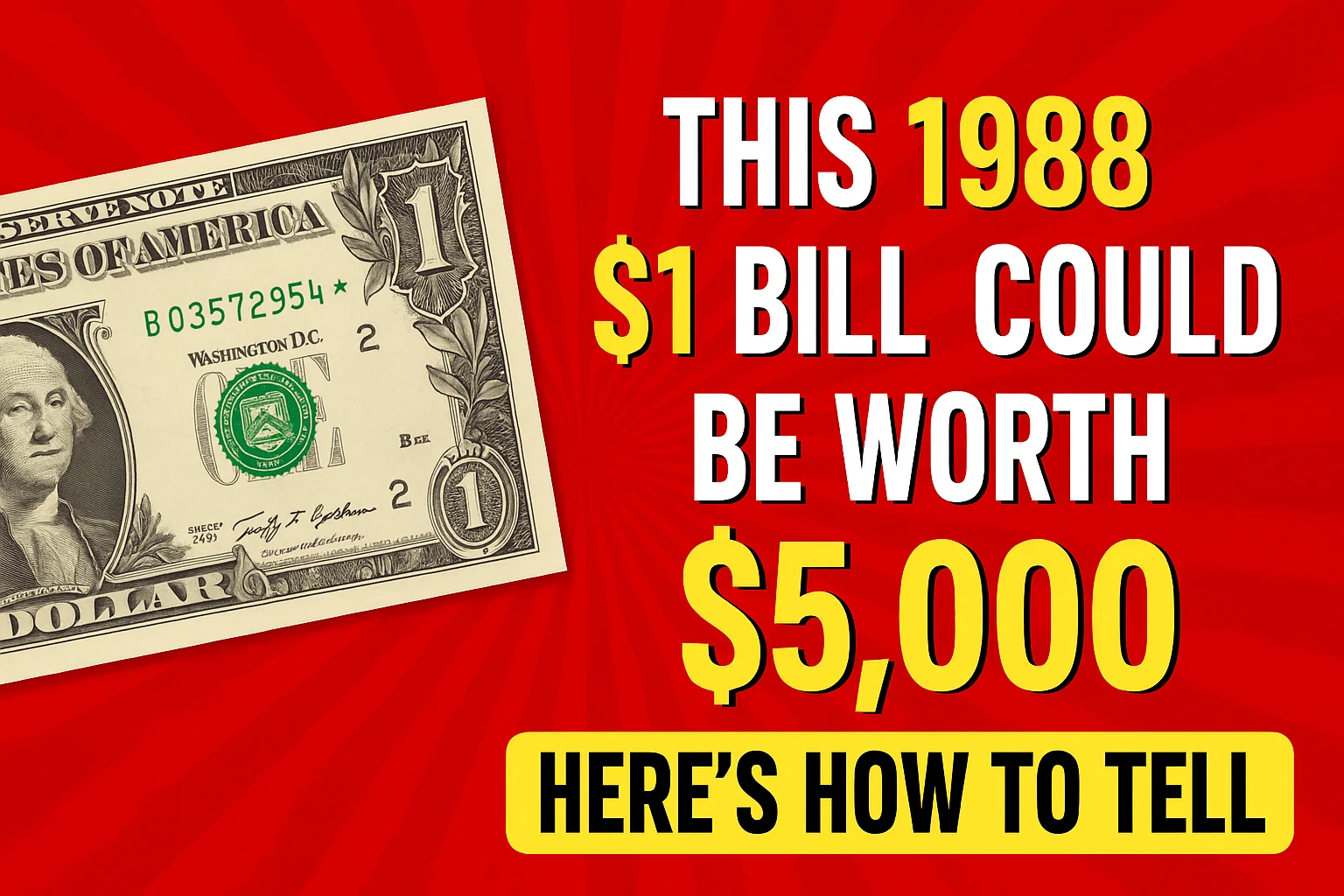That crumpled old dollar bill in your wallet might be worth far more than you think. Collectors are currently hunting for a rare 1988 $1 bill printing error that could be valued at up to $5,000, depending on its condition and serial number pattern. It’s one of those hidden treasures that remind us why it pays to check your cash before spending it.

What Makes the 1988 $1 Bill So Valuable
The rare 1988 $1 bill is part of a series that accidentally received mismatched serial numbers and seals during production at the Bureau of Engraving and Printing (BEP). These misprints occurred when two different production runs accidentally used the same serial numbers — but with different Federal Reserve seals (for example, one from the “B” district and another from the “L” district).
This kind of duplication error, known among collectors as a “mismatched serial error” or “duplicate serial bill,” is extremely rare. Only a few of these bills have been confirmed to exist, and those that remain in circulation are now highly sought after by numismatists (currency collectors).
If you happen to find one, it could sell for thousands of dollars in collector markets, especially if it’s in near-mint or uncirculated condition.
How to Check If Your 1988 $1 Bill Is Worth Thousands
If you have a 1988 $1 bill, take a closer look at these details:
- Check the Series Year: Look for “Series 1988” or “Series 1988A” printed near the portrait of George Washington.
- Look at the Federal Reserve Seal: It should have a letter (like “A,” “B,” “L,” etc.) inside a circular seal on the left of the bill.
- Examine the Serial Numbers: These are printed twice — once on each side of the portrait. If they do not match exactly, or if the same serial number appears on another bill with a different seal, it could be a rare error.
- Inspect the Print Quality: Bills with ink smears, off-center prints, or missing elements can also carry collector value, but the duplicated serial version is the most valuable.
- Condition Matters: Bills in uncirculated condition (crisp, no folds or stains) command the highest prices.
If you think your bill matches any of these traits, don’t spend it — and don’t try to clean or flatten it. Preserve it in a plastic currency sleeve and get it professionally evaluated.
How to Verify and Sell a Rare 1988 $1 Bill
The best way to confirm whether your bill is genuine and valuable is to have it graded and authenticated by a professional service. Reputable agencies include:
- Paper Money Guaranty (PMG) – www.pmgnotes.com
- Professional Coin Grading Service (PCGS Currency) – www.pcgs.com
- Bureau of Engraving and Printing (BEP) – www.moneyfactory.gov
Once authenticated, you can sell your bill through auction houses like Heritage Auctions or Stack’s Bowers, or through trusted collectors’ platforms. In 2024, one such mismatched 1988 $1 bill reportedly sold for over $5,000 at auction.
Why Collectors Love Currency Errors
Currency misprints like the 1988 duplicate serial $1 bills are a perfect blend of history and human error. Since every misprint represents a production anomaly, no two are exactly alike — and their rarity increases as more bills are destroyed or lost over time.
Even if your bill doesn’t have the famous duplicate serial, other print errors (like inverted seals, misaligned cuts, or ink overprints) can still bring in hundreds of dollars.
FAQs
Q1: How can I confirm if my 1988 $1 bill is part of the rare duplicate series?
Compare your bill’s serial number and Federal Reserve letter with published lists of known duplicates or have it examined by PMG or PCGS Currency for authentication.
Q2: Can I check directly with the U.S. government about my bill?
Yes, you can visit the official Bureau of Engraving and Printing website at www.moneyfactory.gov to learn more about printing processes and verified error notes.
Q3: Is it legal to sell rare or misprinted U.S. currency?
Absolutely. As long as the bill is genuine and not altered or counterfeit, it’s legal to sell it to collectors or through auction platforms.
Disclaimer: This article is for informational purposes only. The potential value of collectible currency varies based on market demand, condition, and authentication. Always consult professional grading services or certified currency dealers before selling or appraising valuable notes.
